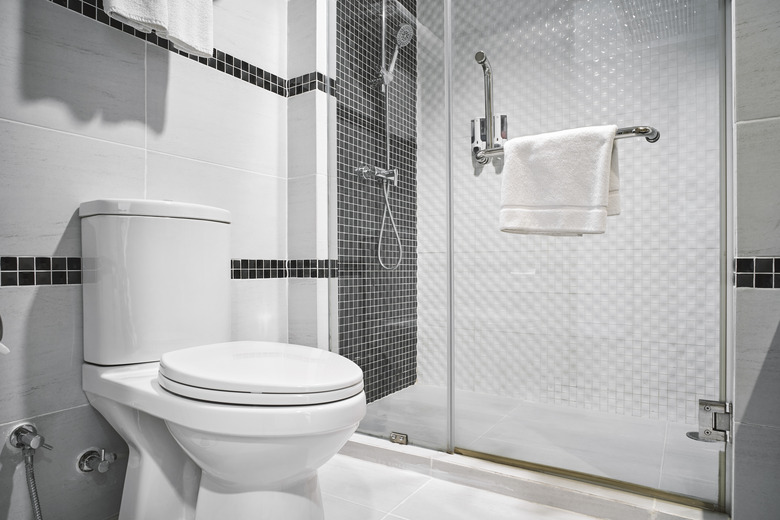Can Spiders Be In Your Toilet?
Spiders lurking beneath toilet seats, awaiting human prey, are the stuff of urban legends. However, there is one situation — in an outhouse — where you may actually find a spider hanging out under the toilet seat. A spider can conceivably end up in your bathroom, but it's unlikely for it to be inside the toilet. It would have to enter the bathroom using the pipe of another fixture, as it can't come up through the toilet's plumbing.
Tip
A spider may find its way to a bathroom, but is unlikely to be inside a toilet unless the toilet is in an outhouse.
A Spider's Favorite Indoor Haunts
A Spider's Favorite Indoor Haunts
When spiders venture indoors, they naturally seek out cluttered, secluded areas that are situated well away from human activity. They're also attracted to moist environments, which a bathroom toilet provides. However, if you regularly clean your toilet, the chemicals will repel spiders from its surface.
A spider is unable to come up through the drain of a toilet because of the water that stays inside the toilet's trap, which is the curved section of the toilet drain's passageway. It seals out small intruders like spiders and also protects against sewer gases entering through the toilet pipes.
Spiders in an Outhouse
Spiders in an Outhouse
The one spot where you might encounter a spider lying in wait under a toilet seat is an outhouse toilet. An outhouse is a small structure that is separate from a main residence. The toilet in an outhouse does not have plumbing, nor is it attached to a sewer system.
The female black widow spider, which is known to bite humans, often builds her web in the hidden confines under the seat of an outhouse toilet. These spiders choose outhouses because the flies that the spiders eat are plentiful in these spaces.
U.S. Venomous Spiders
U.S. Venomous Spiders
In addition to the black widow, which is found mostly in Southern and Western states, the Centers for Disease Control and Prevention explains that the brown recluse is another venomous spider species that's found in the United States and may also venture indoors.
The brown recluse spider, most often found in Southern and Midwestern states, typically looks for secluded, dry areas, like a closet or inside a shoe. Inspecting and shaking out your shoes before you wear them is one way to help prevent brown recluse bites.
The hobo spider, a funnel-web spider of the Pacific Northwest, normally seeks out window sills, closets and areas behind furniture when it enters a dwelling. This spider, which runs fast, is also more likely to attack if it feels threatened. Healthline notes that it was once commonly believed that a hobo spider's bite was dangerous, but new studies indicate that the bite is harmless or nearly so.
Spiders Entering Bathrooms
Spiders Entering Bathrooms
Spiders can wander into a home in search of insect prey, and when they do, they usually settle into undisturbed areas like garages and basements. If a home has a crawl space underneath it, spiders can enter the bathroom from below.
If a lavatory drainpipe goes down through a hole in the floor, instead of through the wall behind the sink, a spider may scale the pipe up through the hole. Prevent this by making sure that the hole around the pipe is totally sealed.
